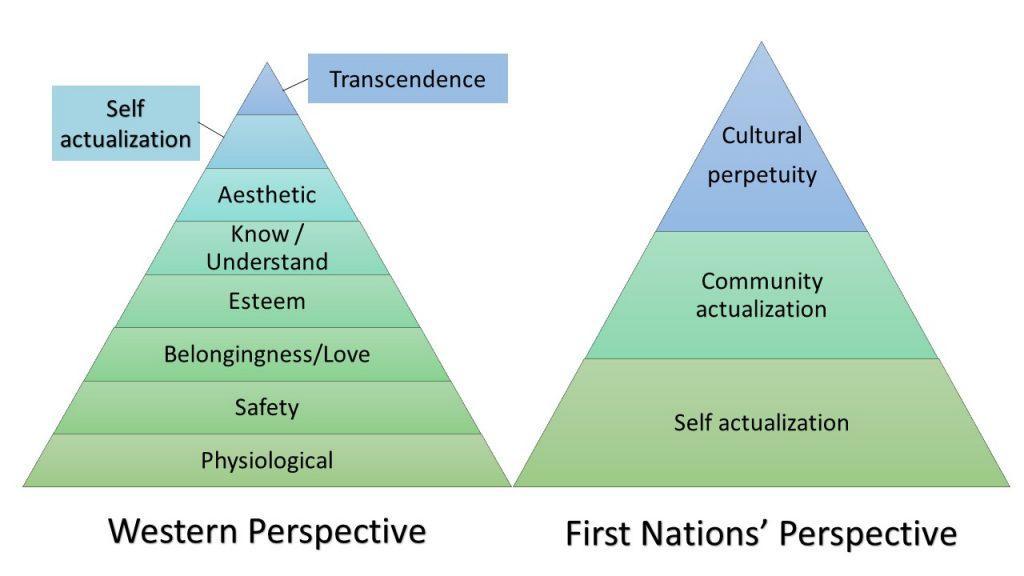8.6 Looking Ahead: Meeting Families’ Needs
Elizabeth B. Pearce
In prior chapters, we have discussed models related to what human beings need. We are sharing this graphic that shows different versions of how families meet needs again (figure 8.19) in relation to the need for housing.

The models differ in perspective, but they both emphasize the importance of basic needs, of which shelter is one. Maslow’s model on the left places shelter as the foundation of the hierarchy of needs, meaning that it must be met first in order for other needs to be achieved. In the First Nations’ perspective on the right, the well-being of the self and of the community is prioritized; well-being includes basic needs for all to be met.
The United Nations, a 193-nation member group founded in 1945, summarizes its mission as “peace, dignity, and equality on a healthy planet.” They created a Universal Declaration of Human Rights in 1948, which includes the following language:
Everyone who works has the right to just and favorable remuneration ensuring for himself and his family an existence worthy of human dignity, and supplemented, if necessary, by other means of social protection (Rosenbaum, n.d.).
There is broad agreement that secure housing is a critical need for families to survive and thrive. While institutional biases that contribute to inequity and lack of secure housing for many families in the United States have decreased, they have not been completely eradicated. Nor have the effects of the prior centuries of discrimination been undone. We must continue to work to understand the past and the present in order to impact the future.
Licenses and Attributions for Looking Ahead: Meeting Families’ Needs
Open Content, Original
“Looking Ahead” by Elizabeth B. Pearce. License: CC BY 4.0.
Figure 8.19. “Maslow’s hierarchy of needs compared to the First Nations’ perspective.” License: CC BY 4.0. Based on research from Rethinking Learning by Barbara Bray.
References
Universal Declaration of Human Rights, United Nations. 1948. Article 23
can include the emotional significance of an action or way of being; the intention or reason for doing something; something that we create and feel; closely linked to motivation.
the unequal treatment of an individual or group on the basis of their statuses (e.g., age, beliefs, ethnicity, sex).

